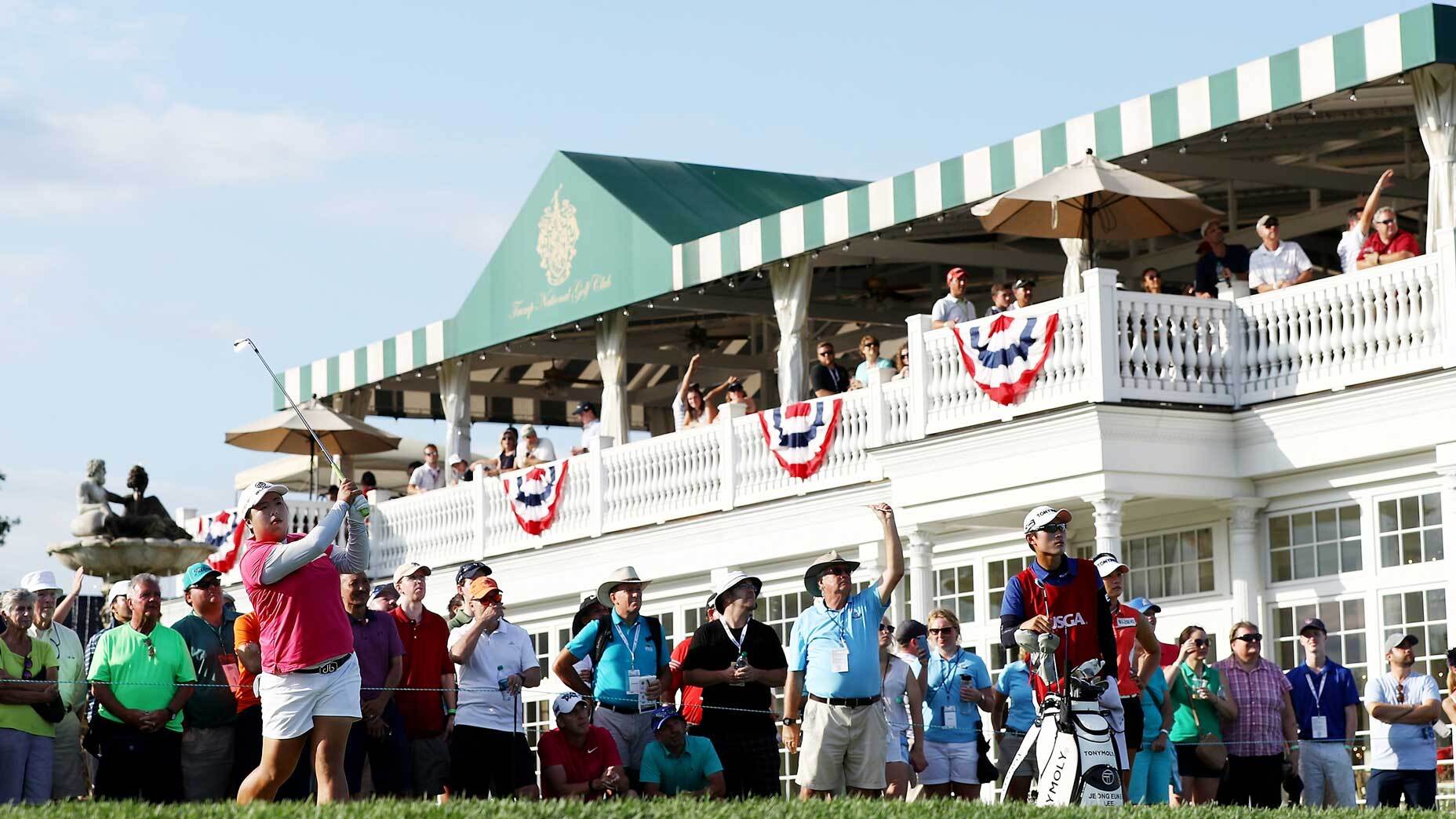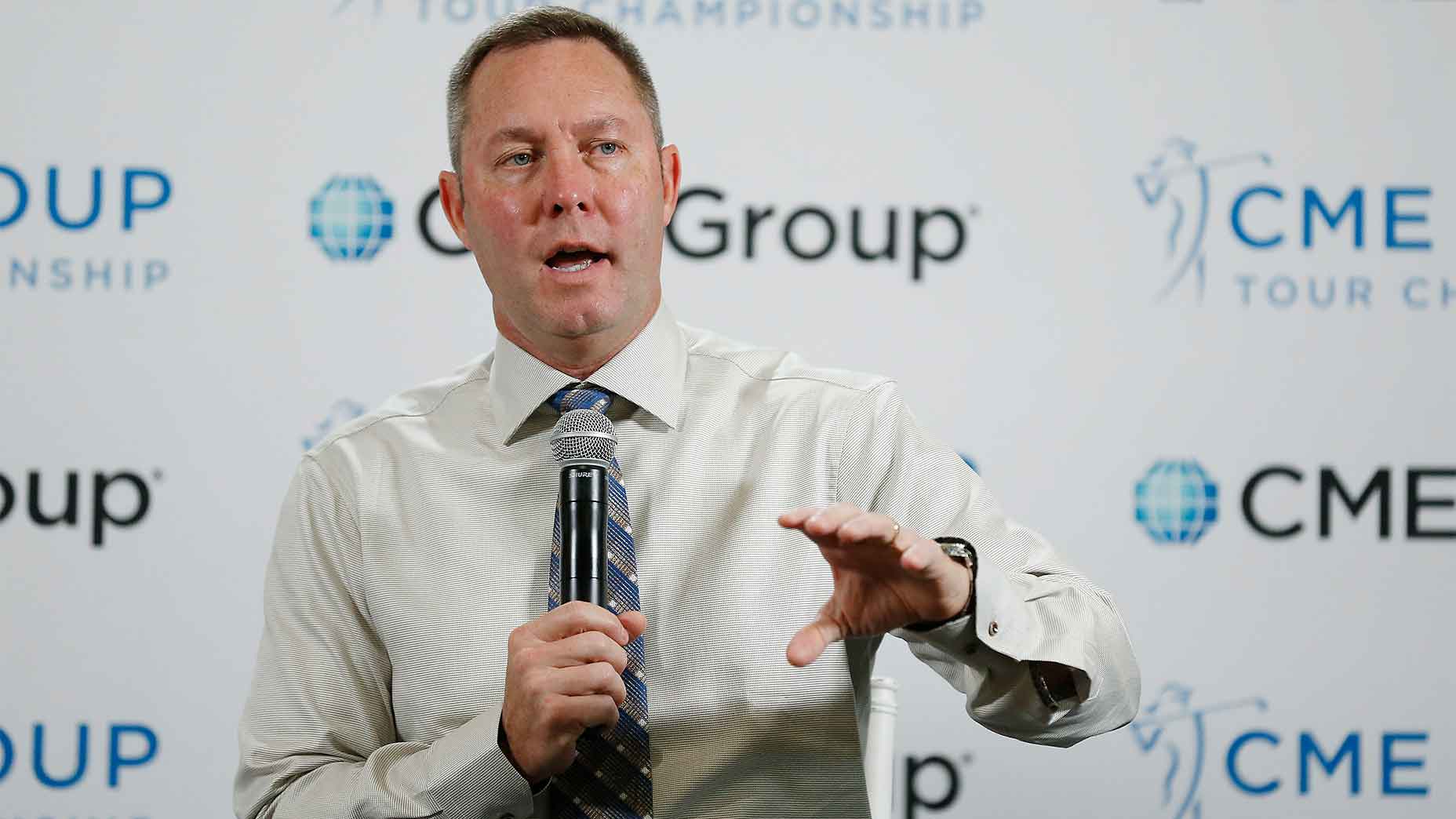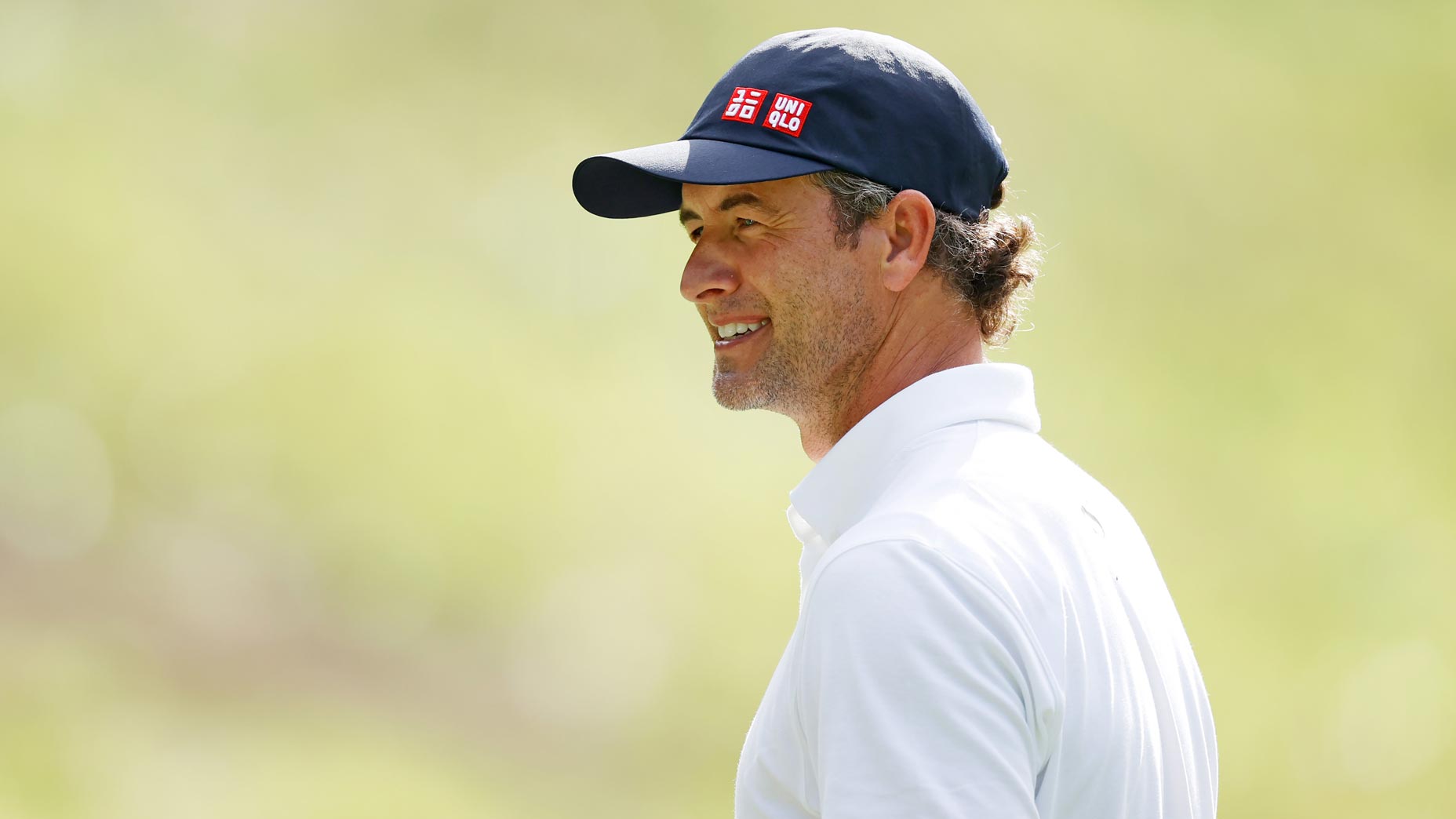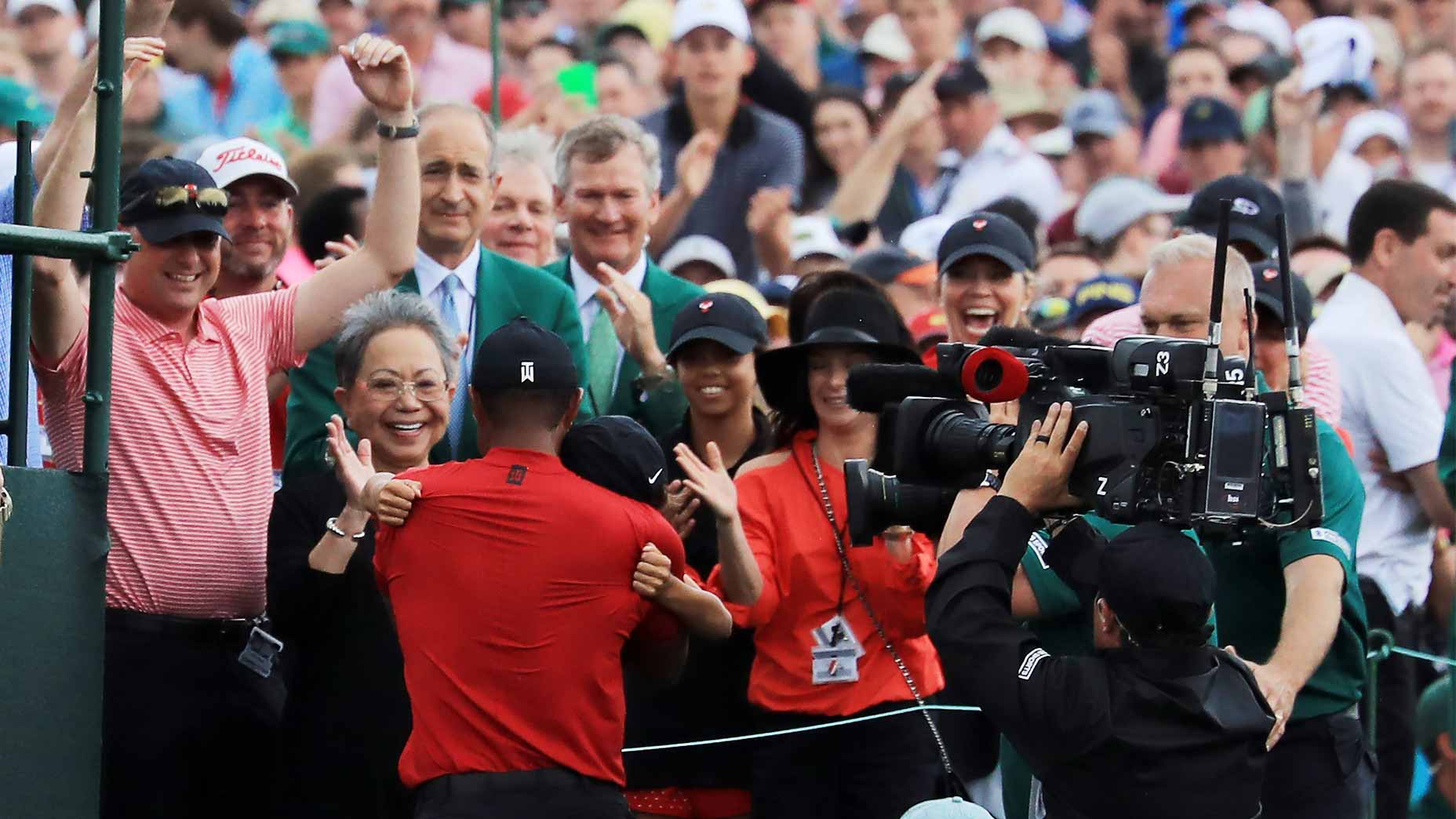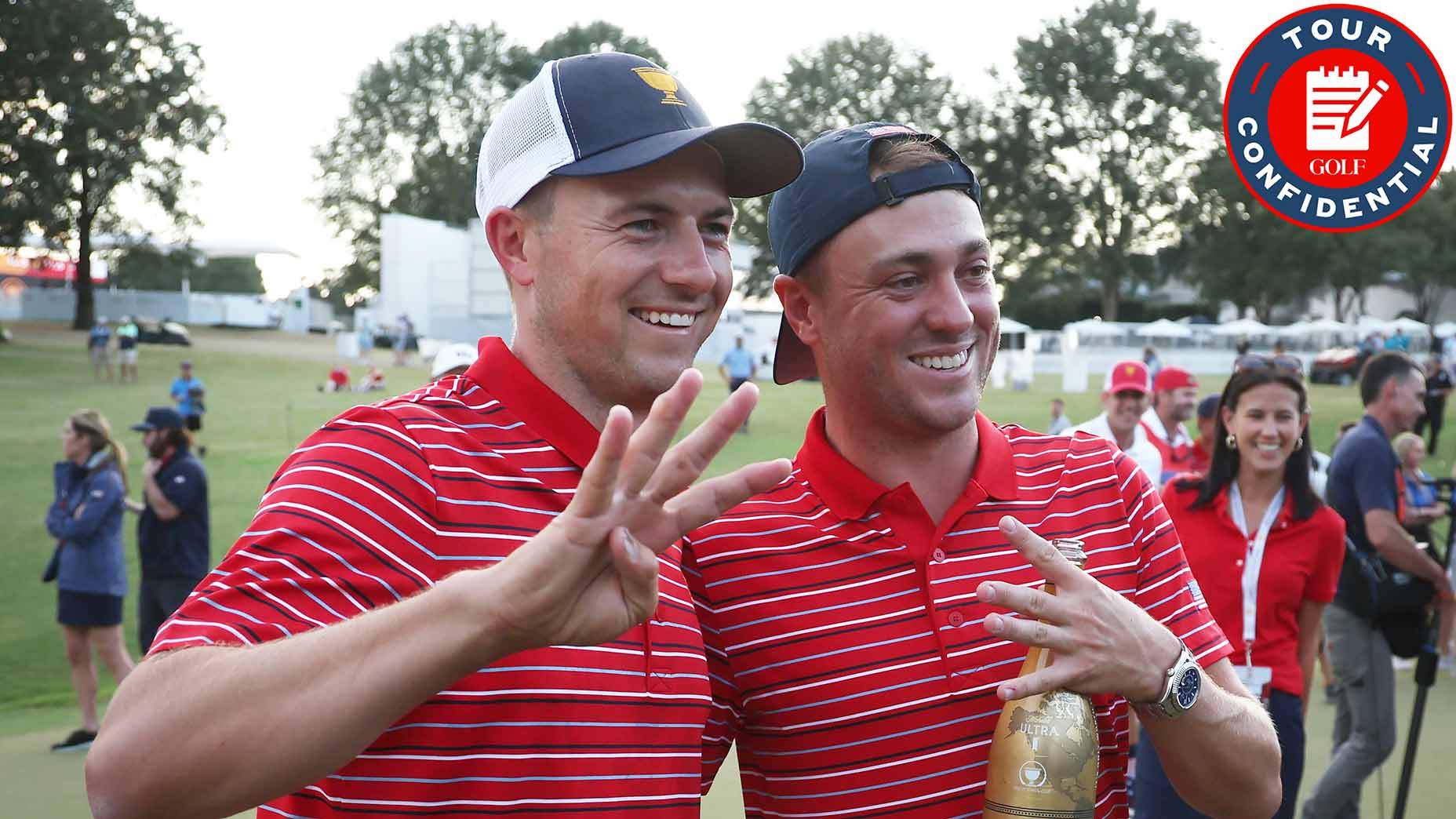Check in every week for the unfiltered opinions of our writers and editors as they break down the hottest topics in the sport, and join the conversation by tweeting us @golf_com. This week, we discuss the PGA of America’s decision to move the PGA Championship, Harris English’s victory, Mike Whan’s legacy, the new Tiger Woods documentary and more.
1. The PGA of America, late Sunday night, announced that it was terminating the agreement to play the 2022 PGA Championship at Trump Bedminster. “It has become clear that conducting the PGA Championship at Trump Bedminster would be detrimental to the PGA of America brand and would put at risk the PGA’s ability to deliver our many programs and sustain the longevity of our mission,” PGA of America President Jim Richerson said in a recorded statement. What venue, in light of the decision, should hold the tournament?
Trump’s New Jersey course loses 2022 PGA Championship after PGA of America voteBy: Dylan Dethier
Michael Bamberger, senior writer: Any course not associated with Donald Trump. Some suggestions in different categories. Innisbrook, Florida resort course. East Potomac G.C., muni with a view of the Washington Monument and no need to do much to it–just let the fellas play, whatever they shoot, they shoot. Cypress Point Club, private club, nice views, good course. (Regarding scores: ditto.) Augusta National, a month or so after the Masters. The first Senior PGA Championship was held at Augusta National and that went so well the second one was held there, too.
Josh Sens, senior writer (@JoshSens): Baltusrol will be fresh off a renovation. Or Canterbury in Ohio. Great championship pedigree that hasn’t hosted a biggie in some time. Or (Bay Area bias alert), bring it back to Harding and let our city course have its crack at another major. With fans this time.
Luke Kerr-Dineen, director of game improvement (@LukeKerrDineen): How about Riviera? It’s an iconic course everyone loves that’s hosted two PGA Championships in the past, there’ll be lots of birdies to go around, and it’s obviously on the west coast, so you’ll get the championship into prime time.
Alan Bastable, executive editor (@alan_bastable): Given it’s super-short notice, the stand-in is going to need to be a plug-and-play venue that has hosted big-time golf in the past. It’d also be nice to keep the event in the Jerz. Baltusrol comes to mind, though I’m not sure that’s many fans’ first choice. And Liberty National is reportedly a front runner. But I’d love to see it at a more classic design that only coincidentally is a five-minute drive from my house: Plainfield, you free?
Dylan Dethier, senior writer (@dylan_dethier): Anyone who visits this space regularly already knows what I’m going to say: Chambers Bay. It made for spectacular tournament viewing the first time around, and that was before they redid the greens — no player-grousing this time around! If we ended up with half the quality of leaderboard we had last time, it would still be a rousing success. Plus, what better time to highlight muni golf?
(If I’m limited to a non-Chambers answer, let’s head back to Royal Melbourne. Yes, I know, it’s the PGA of America … but just file this one under “growing the game” and let’s all head Down Under for a week or two.)
Alan Shipnuck, senior writer (@alanshipnuck): Shoal Creek. For so long, it was a symbol of what’s wrong with the game. But the club has changed, and returning the PGA there would be a symbol of progress at exactly the right time.
2. Harris English snapped a seven-plus-year PGA Tour winning drought with his victory at the Sentry Tournament of Champions on Sunday. Which other win-starved player (let’s say no PGA Tour W’s in the past five years) is most likely to return to the winner’s circle in 2021?
Tournament of Champions: Harris English wins in a playoff to snap a drought and 3 things to knowBy: Nick Piastowski
Bamberger: Jimmy Walker. Sneaky Jimmy Walker.
Sens: Has it really been nearly five years since Tony Finau won in Puerto Rico? It has! Dang, time flies. As a runner-up, I’ll modify the terms and go with Abe Ancer. He got his card in 2016 and has yet to get his first win. That’s gotta change before long.
LKD: Jordan Spieth. He’s off to Butch for a second set of eyes — with the blessing of his coach Cameron McCormick — and I gotta believe it’s going to turn around for him soon.
Bastable: Man, it’s fun to watch players who haven’t won in years getting a taste of victory again. You can see it in their eyes — and hear it in their voice — how much it means, or at least you could with English on Sunday. But to answer the question: Bernhard Langer, 2021 Masters champion.
Dethier: Each of these is a bad answer for one reason or another, Luke’s math issues chief among them (Spieth’s 2017 Open wasn’t THAT long ago). The correct answer is Louis Oosthuizen, who owns just a single PGA Tour win: the 2010 Open Championship.
Bamberger: One would not normally say that there is a correct or incorrect answer in these matters, but Dylan is correct: must be King Louie. Or J. Walker.
Shipnuck: Phil Mickelson. The Senior Tour is giving him shots of confidence, he’s longer than he’s ever been, and one hot week with the putter is all it will take.
3. LPGA Commissioner Mike Whan, after 11 years at the helm, announced he is stepping down. (He did not say what, if anything, he’s planning next.) At the beginning of Whan’s tenure, the tour had only 24 tournaments and official prize money of $41.4 million; in 2021, the women will play for a record $76.5 million across 34 official events — in the midst of a pandemic. What has been Whan’s greatest impact on the LPGA?
The secret to outgoing LPGA commissioner Mike Whan’s success was his human touchBy: Alan Shipnuck
Sens: Growing the tournament schedule globally to better reflect the global nature of the women’s game. But also developing programs through the Tour that reach into the junior ranks, getting more girls into the game.
LKD: Embracing the LPGA Tour’s identity as the most global, diverse tour in golf. Whan boosting its international presence wasn’t just good for the tour in the short term. It planted seeds that will last for generations, as golfers from all over the globe are inspired to take up the game themselves.
Bastable: I can’t think of a more beloved commish in any major sport over the past decade than Whan, with the possible exception of Roger Goodell (kidding). Whan connected on a human level with his players — they could talk to him, vent to him, and that went a long way in fostering a deep loyalty that worked both ways. Yes, he made the players wealthier via bigger purses and more exposure, but he’s also just a good guy who worked tirelessly for his players. Pretty strong formula.
Bamberger: His confidence and belief in the LPGA and how it filtered down through the players, while the players’ confidence and belief lifted him. I wish I knew him better, but from what I saw, a most impressive leader and person. Unpretentious, funny, smart, dedicated.
Dethier: His attitude. To build off Bamberger’s point, I liked the way he spoke to the world. He was proud of his players and their tour, and honest about its challenges, too. He says it’s time to hand off the baton to somebody ready to sprint the next leg of this race. I hope he’s right about that.
Shipnuck: Yes, Whan made the LPGA players feel valued and respected, and he brought that sensibility to the marketplace. When he took over, the tour was in shambles, reeling from the Great Recession and the controversial dealing of his predecessor. Plenty of the players think he saved the LPGA.
4. If you were part of the team charged with recruiting his replacement, who is your first call to, and why?
Sens: Condoleezza Rice. Connected, respected and seriously keen on the game.
Or Sarah Hirshland, with a background at the USGA and now with the Olympics.
LKD: Suzy Whaley. She’s done great work at the PGA of America helping the game become more accessible, she’s been a groundbreaking figure both as a player and as an administrator, and best of all, she’s a GOLF Top 100 Teacher.
Bastable: First call is to Whan, to make one last Hail Mary plea for him to stay. Barring that, how about Alex Baldwin, who runs the Korn Ferry Tour and as a former player-agent understands the players’ needs. Or if we really want to swing for the fences, might I suggest a former U.S. president with a nose for golf. What’s Obama up to?
Bamberger: Amy Banse, former Golf Channel board member. Anyone who knows Amy Banse, I among them, will tell you the same things: it is impossible to say no to Amy Banse.
Dethier: Impossibly strange that a few years ago, “Donald Trump” would have been a potential name floated for this position. Feels particularly less likely now. But how about someone like Jenny Storms? She’s currently the CMO for NBC Sports, where she’s basically been solving a golf leader’s biggest question — how do we get people to watch? — for years. The LPGA Tour needs more creative TV coverage (as does the PGA Tour) and it needs more TV coverage, period. Getting a TV person in the big job might not be such a crazy idea.
Shipnuck: Suzy Whaley is a great choice. But how about a hugely respected former player who is still revered by the membership: Karrie Webb.
5. Adam Scott, who has won 14 times on the PGA Tour, said earlier in the week of the PGA Tour schedule: “I think you’ve got to identify that there’s probably 10 or 12 serious competition events during the calendar year and then the rest is a bit of entertainment, really. But the thing for all of us and people trying to peak for those 10 or 12 serious events is they have got to use those entertainment events to get prepared and get ready.” Do you think most top-tier players look at the schedule the way Scott does?
Adam Scott has some refreshingly honest takes on the PGA Tour scheduleBy: Dylan Dethier
Sens: For sure. Scott is far from alone in thinking about peaking for the big ones. A young Tiger Woods was out for blood in every event he played. I’m hard-pressed to think of a top player who is wired like that today.
LKD: No, I think most players look at the schedule and see about five truly “serious” tournaments (the majors + Ryder Cup) — and everything else. That doesn’t mean they don’t take those events seriously, of course. No pro out there enters an event not wanting to win it. But when push comes to shove, it’s all about the majors.
Bastable: Exactly. For a handful players — see: Tiger, Phil, Brooks — forget about 10 or 12 events; they’re trying to peak for only four events.
Bamberger: What Adam Scott said, and said well, is true for the top 40 or 50 players in the world. The rest are trying to make money, qualify for the Masters and the Players and the WGC events and trying to keep their job for another year.
Dethier: Golfers who have made as much money as Scott has in his career are afforded the opportunity to chase titles based on their legacies. It’s a funny thing, but that makes their pursuit in some way more pure, right? They’re not in it for the money, anymore — already plenty in the bank.
Frankly, for fans, Scott’s vision makes plenty of sense, because it’s hard for a viewer to rally for 50 stroke-play tournaments per year. But 10 or 12? We can handle that. It’s a fun thought experiment, that tournament hierarchy: If you’re limited to 10 events, what gets left out? FedEx Cup Playoffs? WGCs?
Shipnuck: Top tier? Yes. But there are so many other tiers, too.
6. Part I of HBO’s Tiger Woods documentary, Tiger, debuted Sunday night. In your mind, what is the most intriguing element of Woods’ life/career arc?
‘It had to be complicated:’ How the new HBO Tiger Woods documentary came togetherBy: James Colgan
Sens: The comeback. Though I don’t know how you separate that arc of the story from the rest of the narrative, since part of what makes it so enthralling is the heights to which he rose and the depths to which he fell. It was basically a Greek tragedy, with a Hollywood ending.
LKD: His various golf swing changes. That Tiger never rested on his laurels, even at his very best, is perhaps the greatest insight of all into the way his mind works. He has an unrelenting drive to keep improving, no matter what.
Bastable: I’m with Sens — tough to beat the long climb back to that magical week in April 2019. But watching the doc, I also was reminded of the epic-ness of his 2008 U.S. Open win at Torrey. The film did a great job illuminating the dire state of his body in the run-up to that week and Tiger’s stubborn refusal to succumb to the pain. One of the all-time great W’s in any sport from any era.
Bamberger: I’ve watched the first part of the documentary, and I don’t know why Mark Steinberg would think it is anything other than outstanding. It humanizes Tiger immensely. I think it is a superb piece of journalism and storytelling. It sets up everything that is surely coming in the second part: the stiletto parade; Tiger’s body giving out on him; the roadside arrest; the fifth Masters win. Which was great, that win, if you think winning takes care of everything. The most intriguing thing to me about Tiger’s life, to answer the posed question, is how and when he will discover the depth of that lie. Earl provided Tiger with the jet fuel that made his life possible, and Earl was also the retaining wall in Tiger’s life that he could not scale.
(Ed note: Both Bamberger and Shipnuck appear in the documentary.)
Dethier: The most intriguing element of his life is the only thing we’ll never really know: What it’s actually like to be Tiger Woods. The doc was great! I don’t want to minimize that, because it was a complex portrait painted by a compelling cast of characters. Everyone should be particularly eager to watch pt. 2 next week, starring Michael Bamberger. But its best moments were when it gave us windows into Woods’ first-person perspective through the peaks and valleys of an unparalleled career. One moment in that documentary got particularly close for me, though, when Steve Williams recounted this quote from Woods:
“Sometimes you feel you just can’t be yourself, because you’ve got so many people depending on you, so many people watching you, so many people invested in you.”
What’s that like? Hopefully we’ll find out.
Shipnuck: This dovetails with what Mike said — I think there is one question that hangs over Tiger’s life and career, which I’m not sure he wants to answer and I don’t know if he even could: Was it worth it?

